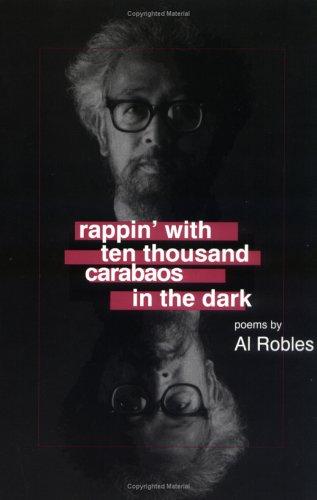Review of "Rappin' With Ten Thousand Carabaos in the Dark" on 'Goodreads'
4 stars
I feel like Al Robles was a Fil-Am beatnik, too down to earth to be what I call a shaman. Though he was born and raised in San Francisco his soul was with the mountain provinces of the Philippines, referring often to the Ifugao region. This is a place of long precolonial history far removed from the metropolises of Manila or California. The first section of this collection "Tagatac in Ifugao Mountain" has a roughness, a scrappiness that is not like any other voice I know. It is devoted to describing the manongs (elders) the author has known, in the work camps in the U.S. west and in the Philippines, each with their distinct personalities. Some of these poems are raw and profane, with hunger and rage and desire, while a few are more mystical. All have an irregular personal feel intent on memorializing a life before everything is lost. …
I feel like Al Robles was a Fil-Am beatnik, too down to earth to be what I call a shaman. Though he was born and raised in San Francisco his soul was with the mountain provinces of the Philippines, referring often to the Ifugao region. This is a place of long precolonial history far removed from the metropolises of Manila or California. The first section of this collection "Tagatac in Ifugao Mountain" has a roughness, a scrappiness that is not like any other voice I know. It is devoted to describing the manongs (elders) the author has known, in the work camps in the U.S. west and in the Philippines, each with their distinct personalities. Some of these poems are raw and profane, with hunger and rage and desire, while a few are more mystical. All have an irregular personal feel intent on memorializing a life before everything is lost. The next section "Back to the Land" has a more diffuse identity with pan-Asian elements rooted in the author's decades of activism including the Kearny Street Workshop. It visits Japan, the Pacific Northwest as far up as Alaska and meets up with poets and other characters there. The third section, "Chinatown Blues for Blues Poets," returns mostly to the Manilatown neighborhood the author fostered. It includes the title poem set in the International Hotel where the Filipino community was once centered, defying the struggles they made daily.

